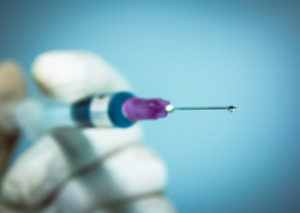
BS, M.Ed, PhD, is director of quality assurance at Milwaukee, Wisc.-based Dental Associates.
By Katherine Schrubbe, RDH, BS, M.Ed, PhD
The shift from multi- to single-use devices
Increasing fears over the transmission of disease, together with advances in needle safety devices, have led many device manufacturers to shift from multi-use to single-use devices over the past 30 years.1 All medical and dental devices are regulated by the Food and Drug Administration (FDA), which defines a single-use device (SUD) as one that is intended for one use on a single patient during a single procedure.2 The FDA, through its Center for Devices and Radiological Health, is responsible for implementing those portions of the Federal Food, Drug and Cosmetic Act that deal with the approval, marketing and distribution of medical devices.3 All dental practices should abide by these standards, however group practices have higher exposure and are at greater risk.
Making the transition
The transition from reusable medical devices to SUDs has presented an ongoing challenge in healthcare. As early as the late 1950s, when an outbreak of hepatitis in southern New Jersey was linked to cross-contamination from needles used for injection, the healthcare industry has become increasingly aware of – and concerned about – patient-to-patient disease transmission. The incident in New Jersey, due to faulty sterilization of reusable syringes, served as a major catalyst in the wide-scale transition to SUDs that occurred just a few years later.4 But this wasn’t the only medical mishap that shed light on the risk of reusing needles. Around that same time, a dentist in New Jersey reused single-use hypodermic needles, resulting in nine patients dying of hepatitis.5
Prior to these incidents, most medical devices consisted of glass, rubber and metal, which were easy to clean and reprocess. With advances in technology, devices became more complex and, at the same time, harder to be properly cleaned and sterilized. As a result, the industry saw a high rate of pathogenic cross-contamination. In the 1960s, however, with the plastics revolution and the development of ethylene oxide (EO) sterilization, there was better access to convenient, disposable sterile products. Particularly with growing awareness of the human immunodeficiency virus (HIV), the prevalence of Hepatitis and the transition to the Centers for Disease Control and Prevention’s (CDC) standard precautions, interest in these devices grew.6
Fiscally responsible, cost effective
 In the current economic environment, dental practices are striving to be fiscally responsible and cost effective – but not at the expense of patient safety and sound, ethical infection control protocols. The dental practice utilizes many SUDs for patient care, including saliva ejectors, impression trays, prophy cups and irrigating syringes. Single-use devices usually are not heat tolerant and cannot be reliably cleaned.7 Although all medical and dental devices and instruments approved by the FDA are accompanied by “instructions for use” (IFU), anecdotally, the dental office staff may decide on their own to reuse a device or instrument that is intended for single-use. An example of this is plastic perforated impression trays, which are labeled an SUD. The question that often arises is, “If the device was only tested in a patient’s mouth for a minute, do I have to throw it away?” The answer is, “Yes!” Single-use means single-use.
In the current economic environment, dental practices are striving to be fiscally responsible and cost effective – but not at the expense of patient safety and sound, ethical infection control protocols. The dental practice utilizes many SUDs for patient care, including saliva ejectors, impression trays, prophy cups and irrigating syringes. Single-use devices usually are not heat tolerant and cannot be reliably cleaned.7 Although all medical and dental devices and instruments approved by the FDA are accompanied by “instructions for use” (IFU), anecdotally, the dental office staff may decide on their own to reuse a device or instrument that is intended for single-use. An example of this is plastic perforated impression trays, which are labeled an SUD. The question that often arises is, “If the device was only tested in a patient’s mouth for a minute, do I have to throw it away?” The answer is, “Yes!” Single-use means single-use.
The instructions for use for a single-use device do not include cleaning and sterilizing process instructions, so it is unacceptable for individuals at the dental practice to take it upon themselves to decide how to reprocess it. Nevertheless, dental team members sometimes decide on their own to immerse items in a cold sterile solution containing glutaraldehyde, without really knowing if this is an appropriate method for disinfection or sterilization of the device or instrument. Sparrow N. suggests several definitive reasons for not following this practice:
- Potential cross infection. Because of the composition of the device, the elimination of all viable microorganisms is questionable.
- Possible leaching of disinfectants. The composition of the device may absorb or adsorb chemicals, which may leach over time.
- Material alteration. Certain devices, such as processed plastics, may soften, crack or become brittle.8 Therefore, placing the perforated impression tray in a chemical solution for disinfection or sterilization has the potential to impact patient safety. If an item is labeled single-use or disposable and does not include instructions for reprocessing, it should be used once and disposed of appropriately.9
Indeed, the manufacturer has labeled the device in this manner for a reason. A device may be marketed as an SUD because:
- The integrity of the product post-reprocessing is unknown because it was never tested.
- The product cannot be reprocessed safely and reliably.
- It is too expensive and time consuming to provide data or conduct studies required by the FDA to demonstrate the device can be reused.
- The liability for the product in case of product failure should be limited.3
Patients as consumers
Patients today have greater access to the Internet and other electronic media, making them better informed and smarter consumers. The result is a population that is increasingly healthcare savvy.6 At the same time, with the use of SUDs, there are significant ethical issues regarding informed consent, patient safety and cost. Beneficence is “to put concerns for the patient’s well-being above any benefit.” Accordingly, a patient’s autonomy is affected by not being informed about the use of a reprocessed SUD.5,10 Consumers have the right to be informed and workers have the right to a safe workplace. All patients should receive the same standard of care without being harmed in the process or exposed to an increased risk of infection.6 That said, there is little evidence that reprocessed SUDs are as safe as new ones, and the more times a device is used, the more likely it is to malfunction. And, since no process is perfect, the odds of infection may be higher, if only slightly, when a device is used on more than one person.10
Weighing the risks
The OSHA Bloodborne Pathogen standard has been in place for over 20 years and the CDC Guidelines for Infection Control in Dental Health-Care Settings have been in practice since 2003. Seeking savings from reuse and ignoring manufacturers’ instructions, as well as FDA regulations, can have legal ramifications, especially if patients suffer harm after being treated with these reused devices.10 There are other questions to contemplate as well when considering reusing an SUD:
- Is the patient aware that this SUD is being used again?
- Should the patient be charged a lesser fee for the procedure since the device is not new?
Dentists should keep in mind that there is a cost involved in re-processing (cleaning, disinfection, packaging and sterilization) devices. And, even if that cost is less than the cost of disposing of SUDs, when one weighs the risks involved – and the costs associated with those risks – in most cases it will be more cost effective to dispose of the SUD.9
Environmental considerations
One disadvantage of SUDs is the addition of non-biodegradable plastic to the environment.9 Indeed, most SUDs are not classified as infectious/regulated waste and can be disposed of in a regular trash receptacle. In fact, one study indicates that American healthcare facilities continue to dispose of over 4 billion pounds of waste annually in landfills and commercial incinerators, making the healthcare industry the second largest contributor to landfills after the food industry.11 Nevertheless, in spite of these concerns, patient safety cannot be compromised and continued research, as well as innovative ideas for recycling, may be part of the solution to this issue.
At the forefront
Patient safety is at the forefront of all dental healthcare procedures. There is widespread utilization of single-use items during the delivery of dental care, helping reduce the risk of disease transmission. Using disposable items enhances infection control by eliminating the risk of patient-to-patient transmission of infectious microorganisms because the item is discarded and not used on another patient.9 Dental healthcare providers have an obligation to follow FDA regulations and IFU to maintain high standards for care. “We must be vigilant about doing things the right way, the safe way. There is no room for practicing by tradition, accepting excuses for not following best practices, not being educated about published standards or for not asking the right questions. Always remember to ask what is right, not who is right. Safety isn’t expensive – it’s priceless”.12
Editor’s Note: Katherine Schrubbe, RDH, BS, M.Ed, PhD, is director of quality assurance at Milwaukee, Wisc.-based Dental Associates.
References
- Sloan T. First do no harm? A framework for evaluating new versus reprocessed medical devices. Journal of the Operational Research Society. 2010;61:191-201.
- US Food and Drug Administration. Available at: https://www.fda.gov/RegulatoryInformation/Guidances/ucm071058.htm. Accessed. April 24, 2017.
- Dunn D. Reprocessing single-use devices – regulatory roles. AORN J. 2002;76;1:100-127.
- Gettysburg Times. New Jersey investigates case of 14 deaths after injections by psychiatrist. January 6, 1961.
- Cohoon BD. Reprocessing single-use medical devices. AORN J. 2002;75;3:557-567.
- Dunn D. Single use devices – the ethical dilemma. AORN J. 2002;75;5:989-999.
- Guidelines for infection control in dental health-care settings – 2003. Atlanta, GA: Department of Health and Human Services Centers for Disease Control and Prevention; 2003. Vol. 52: No. RR-17; 1-68.
- Sparrow N. An inconvenient truth about reprocessing single use devices. EMDT. 2010;1:4.
- Molinari JA. Harte JA. Cottone’s Practical Infection Control in Dentistry. 3rd ed. Baltimore, MD: Wolters Kluwer/Lippincott Williams & Wilkins; 2010; 233-235.
- Collier R. The ethics of reusing single-use devices. 2011;183;11:1245. https://www.ncbi.nlm.nih.gov/pmc/articles/PMC3153512/. Accessed April 24, 2017.
- Diconsiglio J. Reprocessing SUDs reduces waste, costs. Mater Manag Health Care. 2008;17:40-42.
- Seavey R. Moving beyond the wild, wild west of reprocessing. Communiqué. 2012; September/October:70-71.

